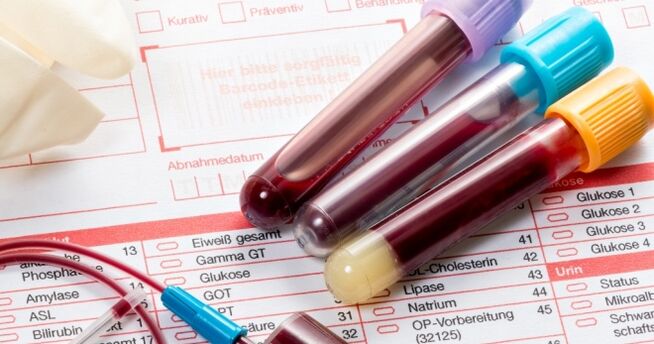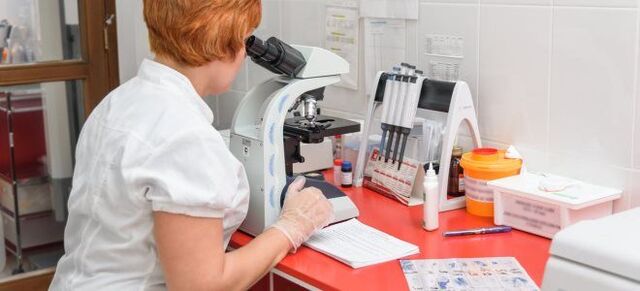
When there are symptoms and signs of the disease, doctors prescribe many laboratory tests to confirm the hypotheses and make a diagnosis. In the appointment list, patients can find an HPV test: what it is, why and when it is prescribed - not everyone can answer.
What is HPV?
Human papillomavirus is a whole group of infectious diseases similar to the widespread HPV virus. Scientists know of more than 100 types of the virus, and not all of them are dangerous to humans. Most of them remain invisible in the body for a long time and cause transport. However, about 14 types of this virus are oncogenic - they cause the development of malignant neoplasms. When diagnosing, doctors always pay attention to the type of HPV, its oncogenicity, which determines the subsequent actions and the nature of treatment.
Human papillomavirus - types
Papilloma virus is generally divided into types depending on the risk of causing the development of oncology. Given this factor, there are three main groups of HPV:
- Non-oncogenic- never cause the development of malignant tumors.
- Low oncogenic risk- can cause cancer under certain conditions: 6, 11, 42, 43, 44.
- High oncogenic risk- When infected with these types of HPV, it is difficult to prevent the development of malignant tumors. Oncogenic human papillomaviruses: 16, 18, 31, 35, 33, 45, 58, 59, 52.

How is human papillomavirus transmitted?
Knowing how the papillomavirus is transmitted can reduce the risk of infection. But in practice it is difficult to prevent it. In most cases, transmission occurs with the onset of sexual activity: sexual intercourse is the main mode of transmission of the virus. Its transfer can also be done during kissing, when there are micro-cracks and scratches on the surface of the lips. Even if you break the rules of hygiene when visiting public places, you can get infected:
- saunas;
- pool:
- baths;
- and also when using someone else's toothbrush, towel, razor.
Infection can also occur when a baby passes through the mother's infected tract at birth. Experts do not rule out the possibility that the virus can be transmitted by contact: it is unstable, but can maintain a certain activity.Among the factors that cause HPV infection:
- early onset of sexual activity;
- multiple sexual partners;
- sexually transmitted infections;
- decrease in immunity.
Human papillomavirus - symptoms
Human papillomavirus can remain invisible in the body for a long time. The incubation period, according to experts, can last from 2 months to 2 years. The disease progresses invisibly: there are no clinical symptoms and the main diagnostic methods show the norm. One in three patients recovers within 6 to 12 months of infection due to the immune system.
The clinical manifestations of HPV damage in the body are reduced to the appearance of skin formations. Patients see papillomas, warts and condylomata on the skin. Their localization may be different and corresponds to where the virus enters the body: the genitals, the surface of the hands, the lips. These formations resemble papillary protrusions, sometimes resembling cauliflower. Speeches are painless, but can cause pain and bleeding with friction and injury.

Why do I need an HPV test?
After talking about the virus, let's move on to information about the HPV test: what is this research, how is it done and in what cases is it prescribed. To begin with, if you suspect human papillomavirus, the analysis can help confirm or refute the hypotheses. This type of research has the following objectives:
- detection of high oncogenic risk HPV;
- confirmation / denial of the persistence of a particular type of HPV;
- assessment of cancer risk in patients with cervical epithelial dysplasia.
In addition to the reasons given for the test, an HPV test (what is it - shown above) may be indicated in the following cases:
- Preliminary screening for cervical cancer in women over 30 years of age.
- Evaluation of the results of surgical treatment of intraepithelial neoplasia.
- Suspicious results of cytological examination of gynecological smears.
What tests should I do for HPV?
There are several ways to determine the presence of papilloma virus in the body. However, in most cases, doctors resort to PCR. If you need to be tested for HPV, patients are tested directly. Various biological body fluids can be used as material for examination:
- blood;
- urine;
- amniotic fluid (when a disease is diagnosed during pregnancy).
When talking about HPV testing, what it is and how it is performed, it is important to note the possibility of studying tissue material. Thus, during colposcopy, the doctor carefully examines the mucous membrane of the cervix. The presence of small papillomas on them is direct evidence that HPV is damaging the body. For confirmation, a small piece of tissue is taken for examination under a microscope to rule out malignant tumors.
HPV diagnostic methods
HPV diagnosis is a set of measures aimed at detecting the presence of the virus and determining its type. The following techniques are used for this purpose:
- Digen test- modern accurate method. With its help it is possible to determine the concentration, type and oncogenicity of the virus in the body. The material for the study is abrasions from the mucous membrane of the urethra or vagina. Often used in conjunction with cytology.
- PCR diagnosis of HPV- a simple and convenient diagnostic method widely used. The material used is the patient's blood or urine. It involves the detection of traces of viral DNA in a sample.
- Cytological examination- Examination of the smear under a microscope. The evaluation criterion is the presence of altered cells in the smear - dyskeratocytes and coilocytes.
- Detection of antibodies to HPV- Helps detect viral infections at an early stage. The disadvantage is that it is impossible to determine the concentration and type of virus.
- Histological examination - examination of a sample of affected tissue to determine the type of HPV and its oncogenicity.

Human papillomavirus - how to be tested?
Prior to the examination, even during the referral, doctors explain to the patient in detail how to test for HPV in a particular situation. The analysis algorithm may be different depending on the methods used and the examination materials. Preparation for the study is of great importance. Proper implementation of all aspects of the preparatory measures allows to obtain objective results of the analysis and eliminate the need for re-execution.
Preparation for HPV testing
Before testing for HPV, the patient must meet a number of conditions. In this case, the method of the survey and the type of material for analysis are crucial. It is represented by:
- blood;
- urine;
- a tampon from the vagina or urethra.
Depending on the type of biological fluid being examined, the patient is given advice on how to prepare for the analysis the day before. The task of the examiner is to fully follow the rules of preparation. This will avoid false positives and, in some cases, false positives when the result shows that it is present in the absence of HPV.
HPV blood test
When talking about how the HPV test is performed, it should be noted that in most cases, the patient's blood is used for this purpose. The study is performed on an empty stomach: the patient is not allowed to eat for 10-12 hours before the expected time of taking the material, you can use plain still water as a drink. It is forbidden to drink alcohol, fatty and harmful foods 2-3 days before the day of analysis. Only in this case, the diagnosis of HPV in the blood will allow you to get accurate test results.
HPV smear analysis
This method is more often used to investigate delicate sex. Women prepare for this test before being tested for HPV. The doctor acquaints the patient in detail with all the rules of preparation.The following important points can be emphasized in this process:
- The ointment is taken before starting a course of antibiotics or 2, 5 weeks after the end of treatment.
- On the day of sampling, it is forbidden to use the toilet of the external genitalia using chemical hygiene products.
- It is forbidden to take a shower or use vaginal suppositories.
- You should abstain from sexual intercourse the day before taking the material.
- It is ideal to perform an analysis in the middle of the period, it is forbidden to conduct research during the ovulation period.

Decoding HPV analysis
Only a doctor can decipher the results of an HPV test correctly. The specialist assesses not only the quantitative value of the indicators, but also the clinical picture, the possible signs of infection. Getting a complete picture of what is happening can help you choose the right medication and choose effective treatments. At the same time, it is important to take into account the severity of timely diagnosis and treatment: the risk of developing malignant neoplasms increases with age.
Quantitative HPV analysis
When the HPV test uses quantitative analysis, decoding involves determining the concentration of the virus during the study. This helps to determine the right tactics for patient management. Real-time PCR (RT-PCR) measures the amount of HPV DNA in a test sample. This is necessary for continuous dynamic monitoring of a particular type of human papillomavirus.
However, those who know HPV testing, what it is and how it is performed, cannot decipher the results independently. This should be done in conjunction with the patient's examination and other examinations. In assessing, experts follow the following interpretation of indicators:
- lg< 3- the risk of developing dysplasia is low;
- lg 3-5- a clinically significant outcome, there is a risk of developing cervical dysplasia;
- lg >5- high probability of dysplasia, probably the initial stage of the disease.
Qualitative HPV analysis
High-risk oncogenic HPV testing is performed using this technique. Helps identify HPV types 16 and 18. These forms of the virus often cause genital cancer and squamous cell carcinoma, genital warts and cervical dysplasia in women. The efficiency of HPV DNA detection reaches 98%. The result suggests an answer with an indication of each virus type. There are two possible outcomes: found / not found.















































































